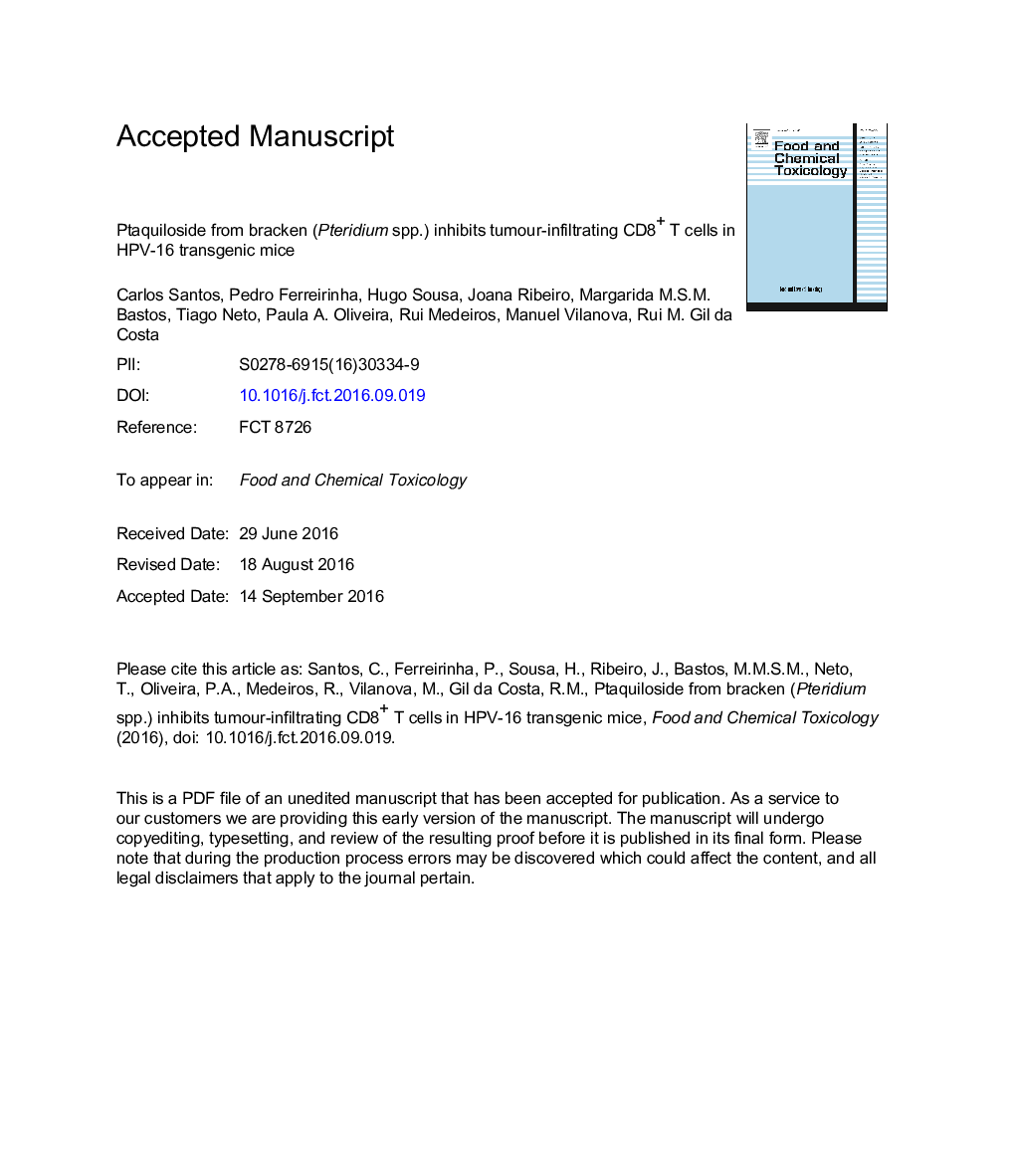| Article ID | Journal | Published Year | Pages | File Type |
|---|---|---|---|---|
| 8549288 | Food and Chemical Toxicology | 2016 | 20 Pages |
Abstract
Bracken is a fern with worldwide distribution. Exposure to bracken toxins such as ptaquiloside is hypothesized to increase the risk of papillomavirus-related cancers of the upper digestive tract. Ptaquiloside is thought to be an immunosupressor, thus allowing for the development of viral lesions. We have used a human papillomavirus type 16-transgenic (K14-HPV16) mouse model to study the effects of ptaquiloside on tumour-infiltrating CD8+ T lymphocytes, which are critical players in anti-tumour immunity. HPV16+/â mice received ptaquiloside (0.5 mg/mouse/week) for 10 weeks. These were then euthanized at 30 weeks of age, along with age-matched untreated controls. Skin samples were enzymatically digested and CD8+ T cells analysed for CD107a and CD44 surface expression. Ptaquiloside-exposed HPV16+/â mice showed a significantly decreased percentage (PÂ <Â 0.05) of CD8+CD107a+ and CD8+CD44Â +Â T cells when compared with untreated HPV16+/â animals. Histologically, 100% of ptaquilosidetreated mice showed diffuse epidermal dysplasia, compared with 50% of the untreated mice. These findings suggest that ptaquiloside exerts an immunosuppressive role by decreasing CD8+ T cell activation and degranulation in HPV-induced lesions. Given the key role of CD8+ T lymphocytes against HPV-induced lesions, this effect is likely to contribute for viral persistence, tumour progression and increased aggressiveness in patients with HPV-related malignancies.
Keywords
PTQK14mAbCTLLAMP1FcγRHSQCIFN-γnuclear magnetic resonancenatural killerbpVCD8+ T cellsH&EMonoclonal antibodyBrackenNMRCancerHeteronuclear single quantum coherence spectroscopyFas LigandFasLCytotoxic T lymphocytesmajor histocompatibility complexMHCwild-typeHuman papillomavirusBovine papillomavirusHPVPtaquilosidelysosome-associated membrane protein 1Gamma-interferon
Related Topics
Life Sciences
Agricultural and Biological Sciences
Food Science
Authors
Carlos Santos, Pedro Ferreirinha, Hugo Sousa, Joana Ribeiro, Margarida M.S.M. Bastos, Tiago Neto, Paula A. Oliveira, Rui Medeiros, Manuel Vilanova, Rui M. Gil da Costa,
